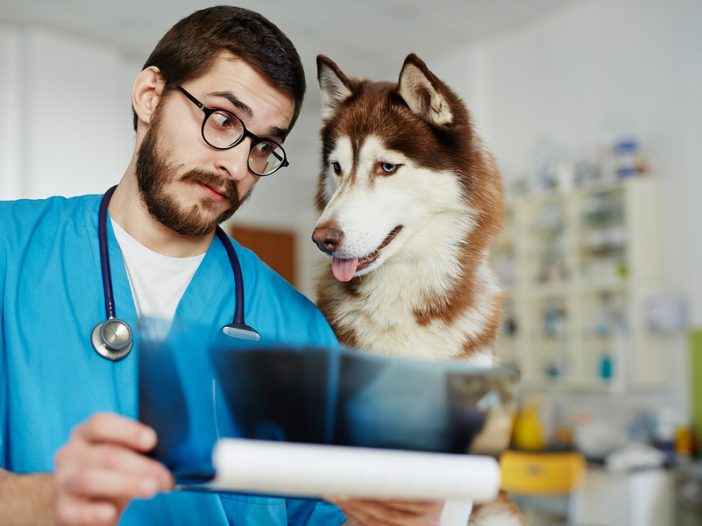
Sometimes after a big, nasty mass removal, or other messy surgery, I look down at my blood-splatted scrubs and think to myself, I sure hope I don’t get pulled over by a cop on the way home. This is often followed up by me thinking about what would happen if I did get pulled over by a cop.
He’d probably ask me to get out of the car. He’d pop my trunk looking for the body. I’d try to explain that I’m a vet and it’s dog blood from a still alive dog who was anesthetized at the time the blood was spilt. The nice police officer might still be a little suspicious, so I’d need to prove myself.
“Hemangiopericytoma,” I’d say, or some other big, important-sounding medical term. After all, only a doctor would know that word.
Now, you’re probably wondering where I’m going with this story. Is there a point other than the fact that I’m super weird and have very strange daydreams?
There is. And that point is that words are powerful. Certain words can make us feel smart and important. They can give us identity. We spent a long time learning the language of medicine. My first year of vet school, I sometimes felt more like I was learning a foreign language than learning medicine. And what’s the point of memorizing all those fancy words if we never get to use them?
I found the lure of “jargon” to be especially alluring when I was a new grad. I was young and inexperienced, and I needed people to trust me and believe I knew what I was doing. So, I threw out the big words with abandon. Look how smart I am, I can tell you your dog has gastroenteritis. You cat has an eosinophilic granuloma.
But the truth is, these words may make you feel smarter, but to clients, they often just make you sound like a smart ass. When you tell a client that you’re taking their pet for a radiograph, most of them will give you a blank stare. And they may even feel stupid for not know what that means. Then, they’ll start tuning out of the rest of what you have to say.
I know, I know, our professors drilled it into our heads: X-rays are the electromagnetic currents that are used to generate the image, radiographs are the images themselves. But we’re not in school anymore (unless you still are, in which case, save this lesson for a rainy day).
I got into an argument online about this one day. I (ever so politely, I swear) explained that very few clients know what the heck a radiograph is.
“You’re right,” the person said, “next time I’ll make sure to explain the difference between an x-ray and a radiograph to them.”
I must have pulled a periocular muscle I rolled my eyes so hard (my intended audience here is vet professionals so the word “periocular” is fair game). Clearly, I wasn’t communicating well if that was her take away from what I’d said.
Honestly, do you think your clients care about the difference between an x-ray and a radiograph? Is that really what you want to spend your time explaining to them, when you could be explaining what that distended, gas-filled loop of bowel means? Your client doesn’t want to know if you can recite Dorland’s Medical Dictionary, they want to know that you can fix their pet. And if you can’t fix their pet, they want to know what you can do to relieve their pet’s suffering.
It’s tempting to use medical jargon when explaining a medical problem. It’s quick, descriptive, precise—pyogranulomatous inflammation with bacterial sepsis is a beautiful phrase — if you know what it means. But it won’t help you connect to your client. It won’t tell them what’s wrong with their pet. It’s not likely to inspire compliance when you suggest an expensive culture, then tell them to come back for a recheck. You need to speak to your clients in terms they can understand.
The truth is, you can be the smartest person in any room, but if you can’t effectively communicate your knowledge to someone else, you’ll never be a great clinician. As practicing doctors (or techs) we need clients. We need them to agree to the diagnostics we recommend, we need them to administer the medications we prescribe, we need them to bring their pets back to us. And to make any of that happen, we need our clients to understand us. So, stop with the medical-ese and speak a language your client can understand.
The views and opinions expressed in this article are those of the author and do not necessarily reflect the position of the DrAndyRoark.com editorial team.